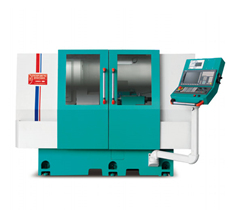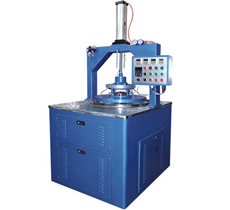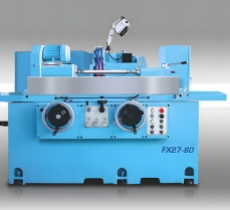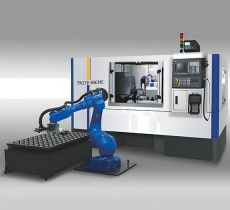What is a grinding machine?
Just like sandpaper is used to sand wood or stone, a grinder is a specialized sanding tool in the manufacturing industry. Its main task is to ensure that parts are manufactured to a superior level of surface quality and accuracy, which is comparable to performing microsurgery on a product to refine its appearance. This makes grinding machines an indispensable part of the manufacturing industry, providing critical support for the quality of the final product.
Grinding Machine with Simple working Principle:
Known for its exceptional high precision, the core action of grinding is lapping or grinding. The core action is lapping, or grinding, whereby a grinding tool precisely cuts away excess material from a workpiece to achieve the desired shape, size and smooth surface. This precision grinding process utilizes high-speed rotating abrasives (usually grinding wheels) to grind and improve the precision and surface quality of the workpiece. Grinding is widely used by the global manufacturing industry as the preferred method for producing high precision parts.
What are the most common types of grinding machines?
Grinding machines play an indispensable role in the manufacturing industry. Below is a brief introduction to six common types of grinders, each of which offers a unique solution for different workpiece needs, injecting more efficiency and versatility into the manufacturing process.
1.
Cylindrical Grinding Machine
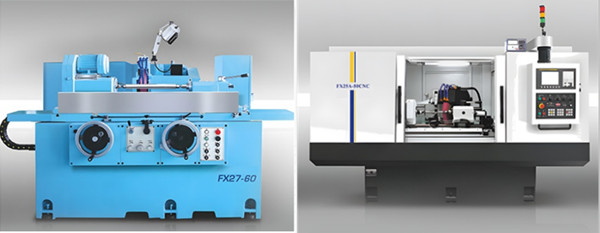
A type of grinding machine that specializes in grinding the outer diameter and end faces of workpieces, especially suitable for handling workpieces of various shapes, including cylinders, cones, ellipses, cams, and crankshafts, etc. The uniqueness of the machine lies in the fact that the workpieces have to be grinded in a cylindrical manner. The uniqueness of the machine is that the workpiece needs to have a center rotation axis to ensure the grinding accuracy and to show the flexibility in the processing of various shapes.
2.
Centerless Grinding Machine
.jpg)
Centerless grinding machines have the advantages of high productivity, continuous processing, and mass production. Widely used in automobile, electrical products, precision molds and other shaft parts that require mass production. The grinding process does not require the shaft positioning of the workpiece for grinding, but is mainly controlled by the grinding wheel with the adjusting wheel to control the rotation of the workpiece and generate the feed speed, while the workpiece holder (tool plate) supports the workpiece during the grinding process to complete the final workpiece dimensions, roundness, cylindricity, and surface finish of the precision requirements.
3. Internal Grinding Machine
Internal Grinding Machine is designed for processing the inner hole of the workpiece, using small grinding wheels as abrasive tools to accurately remove the excess material on the surface of the inner hole to meet the high precision requirements of manufacturing and assembly. This type of grinder is widely used to process the internal surface of shafts and collars, including tapered holes, through holes, and non-through holes.
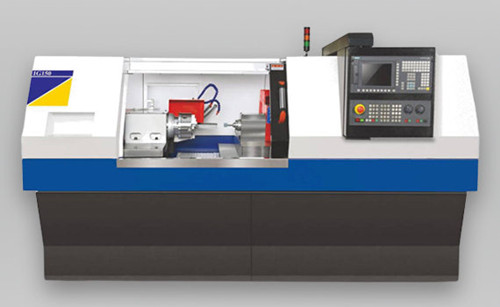
4. Vertical Grinding Machine
With its special structure, it is not affected by the vibration and deflection caused by the weight of the workpiece fixture, and is especially suitable for the manufacture of large, heavy and irregular-shaped workpieces. The grinding wheel spindle is parallel to the worktable and grinds in a vertical direction, which can be used for precise grinding of internal holes and end faces.
5. Surface Grinder
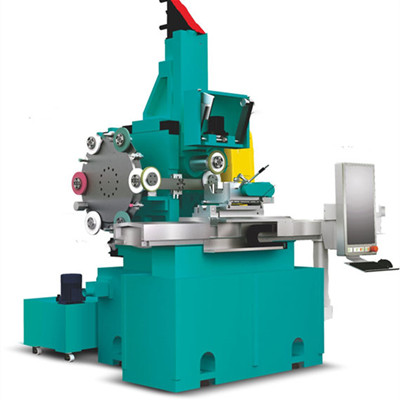
It is mainly used to grind the flat or molded surface of the workpiece, and carry out processing by means of back and forth movement. The main tool used is the outer edge of the grinding wheel, which is often used in the manufacture of parts requiring a smooth surface, such as molds, gears and guides. The unique machining method of Surface Grinding Machines provides the flexibility to work on different shapes of surfaces, including flat, concave and convex surfaces.
6. Tool Grinder
A grinder specially designed to grind, dress and finish a wide range of tools, blades and drills. We can use it for dressing the cutting edges of tools, as well as adjusting their shape to ensure that the cutting edges remain sharp to improve the accuracy and life of the tools. Providing efficient cutting performance, they are indispensable tools in the manufacturing industry.
What are the applications for grinding machines?
1. Aerospace industry
In the aerospace field, grinding machines are often used to manufacture aircraft engine components and lightweight structural parts to ensure the stability of the aircraft during flight and the safety of the entire aircraft.
2. Automobile Industry
In automobile manufacturing, engine parts and precision parts of the transmission system, such as crankshafts and cams, high precision is crucial. When the engine is running, it needs to be perfectly coordinated between the parts, and grinding can ensure that the dimensions and surface smoothness of these parts are at their best, which can provide excellent and reliable performance of the automobile.
3. Medical Industry
Precision is one of the key indicators in the manufacture of medical devices. Especially for artificial joints or implantable devices, their surface smoothness is directly related to their compatibility with human tissues, which reduces the risk of friction and tissue damage to ensure the success of surgeries and the safety of patients. These instruments need to fit perfectly into human tissue to ensure successful surgery and patient safety. Grinding machines are capable of achieving extremely high machining precision to meet the stringent standards of precision required by the medical industry.
4. Hardware parts, communication equipment, mechanical parts
Many of the hardware parts, communication equipment and mechanical parts that we use in our daily lives have various complex shapes, different hardnesses, and different types of metallic and non-metallic materials that may need to be processed by grinding machines. Grinding machines not only solve the problem of machining complex shapes, but also improve precision and quality, the application of grinding machines can also significantly improve the overall quality of the product. By accurately grinding the material, the grinder produces a smooth, flat surface, which reduces friction and wear between parts and improves the product's lifespan.
Conclusion: Mastering the grinding machine, starting the high-performance revolution
As an important part of industrial production, the grinding machine not only represents the continuous evolution of technology, but is also a crystallization of intelligence and precision. In the pursuit of high efficiency and the reluctance to compromise precision in industrial production, the grinding machine has become an indispensable assistant. They not only grind efficiently, but at the same time maintain extremely low surface roughness. According to different processing methods, grinding machines can be subdivided into cylindrical grinding machines, centerless grinding machines, internal grinding machines, vertical grinding machines, tool grinding machines, surface grinding machines and other categories to meet different processing needs and solve various processing problems.


.jpg)


.jpg)
